Love To Know Media
Your Dictionary: Literary Terms to Know in Seventh Grade
This site lists and briefly defines the literary terms 7th graders should know including types of writing, literary devices, sound devices, figurative language, and parts of a story,
Encyclopedia Britannica
Encyclopedia Britannica: Literature: Personification
Explains what personification is and gives examples. Includes links to related articles on symbolism, elements of rhetoric, fables, figure of speech, and allegory.
Department of Defense
Do Dea: Thinking Skills
In this self-guided course, you will be looking at several pieces of literature in many different forms. This unit will teach you some principles of thinking and learning and how to use basic literary terms in the analysis of literature....
Other
University of North Carolina: Glossary of Literary Terms
This site is provided for by the University of North Carolina at Pembroke. Over forty literary terms defined by college students, each with thorough examples.
Quizlet
Quizlet: Literary Elements/humorous Fiction Terms Flashcards
Literary elements are included in this review exercise. Flashcards are provided for the following words: allusion, antagonist, dialogue, flashback, imagery, protagonist, symbol, dialect, hyperbole, idiom, irony, parody, pun, sarcasm,...
Ted Nellen
Cyber English (By Ted Nellen): Literary Terms
This is an extensive glossary of literary terms.
Other
St. Edward's University: Devices: Assonance/consonance
Defines and compares the use of assonance and consonance in poetry, with examples.
PBS
Pbs Learning Media: Literary Elements and Techniques: Figurative Language
Discover how authors use figurative language to enhance their writing and explore the differences between similes and metaphors in this animated video [3:37] from WNET. Discussion questions below help students to further apply their...
PBS
Pbs Learning Media: Literary Elements and Techniques: Tone and Mood
Explore the difference between tone and mood in this animated video [2:28] from WNET through definitions and examples from poetry and prose. Discussion questions below help students to further apply their understanding before analyzing a...
PBS
Pbs Learning Media: Literary Elements and Techniques: Imagery
Explore the literary technique of imagery to see how sensory language contributes to the meaning and feeling of a poem in this animated video [1:23] from WNET. Discussion questions below help students to further apply their understanding...
PBS
Pbs Learning Media: Literary Elements and Techniques: Symbolism
Explore how authors use symbolism to add a deeper level of meaning to their work in this short animated video [1:12] from WNET. Discussion questions below help students to further apply their understanding before analyzing a text.
Ted Nellen
Cyber English (By Ted Nellen): Consonance
This is a glossary entry for the term "Consonance" including the defintion and an example.
Ted Nellen
Cyber English (By Ted Nellen): Literary Term: Onomatopoeia
For a clear explanation of onomoatopoeia and several examples from well-known poets, use this page.
Ted Nellen
Cyber English (By Ted Nellen): Connotation
This is a glossary entry for the term "Connotation" including the definition and an example.
Ted Nellen
Cyber English (By Ted Nellen): Diction
This is a glossary entry for the term "Diction" including a definition, an example, and a link to more examples.
Ted Nellen
Cyber English (By Ted Nellen): Symbol
This is a glossary entry for the term "Symbol" including definitions and examples.
Ted Nellen
Cyber English (By Ted Nellen): Syntax
This is a glossary entry for the term "Syntax" including definitions and background for the term.
Ted Nellen
Cyber English (By Ted Nellen): Theme
This is a glossary entry for the term "Theme" including a definition and an example.
Other
Polynesian University: Academic Writer: Analogy
Describes different writing strategies to be used with analogies to help get a point across. Gives three good examples.
Other
Knowledge Master Weekly Quiz: Allusions
Take this quiz to see if you can identify the many ways that allusion is used in our language. W.9-10.9a Analysis
Other
Spelling police.com: Analogy
Informational site that provides the definition for and examples of analogy.
Other
Anthropomorphism
A good, concise definition of anthropomorphism in mythologies, art and literature.
Emory University
Emory University Writing Center: Personification
A definition of personification. Includes two examples- one from the poetry of Sylvia Plath, the other from John Keats' poem "To Autumn."
Houghton Mifflin Harcourt
Holt, Rinehart and Winston: Elements of Literature: Allegory Chart [Pdf]
A graphic organizer to understanding allegories in a given piece of literature. Fill in the sections on literal meaning, symbolic meaning, and the lesson presented.



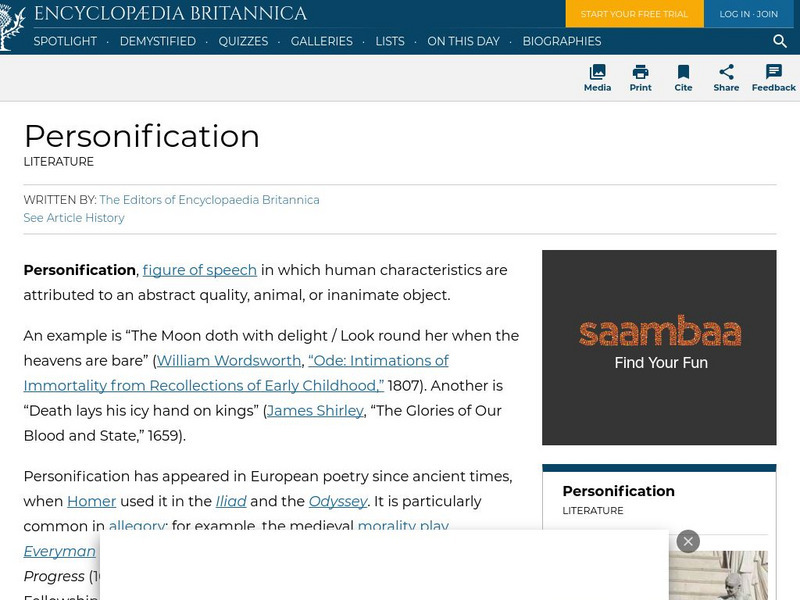
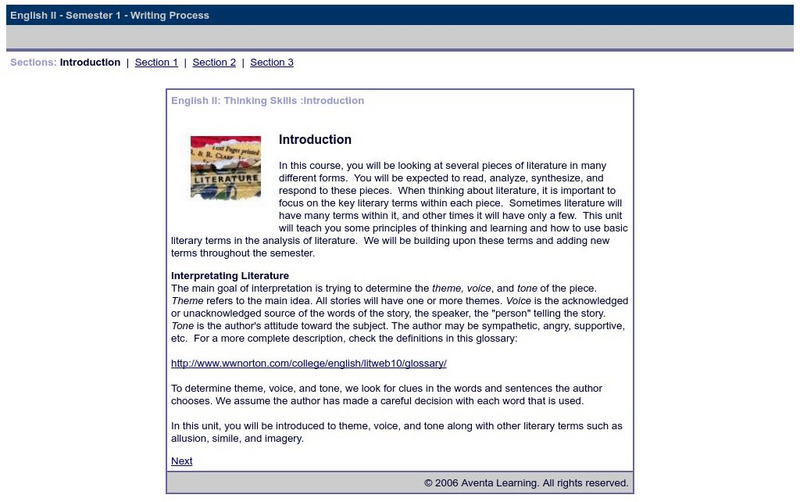






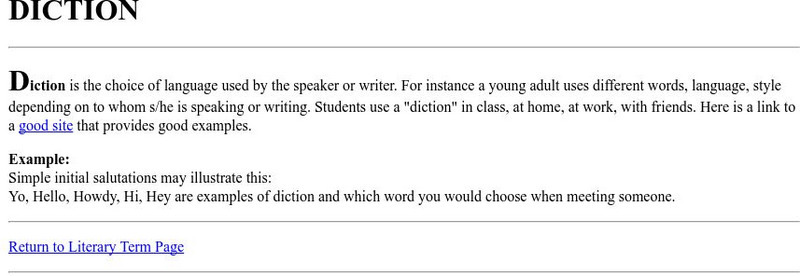

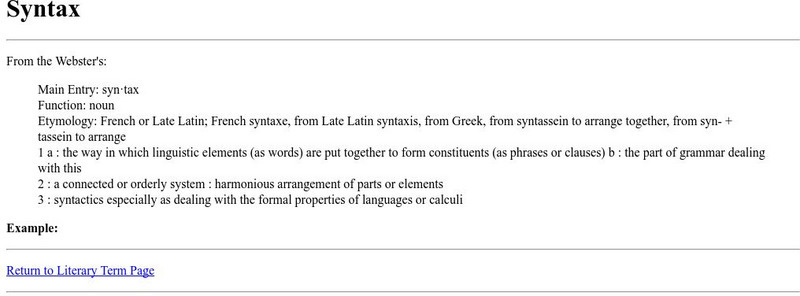
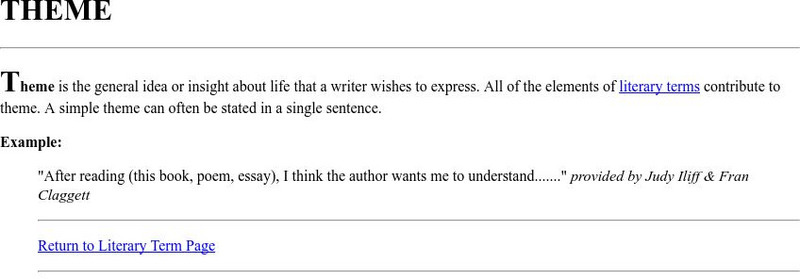
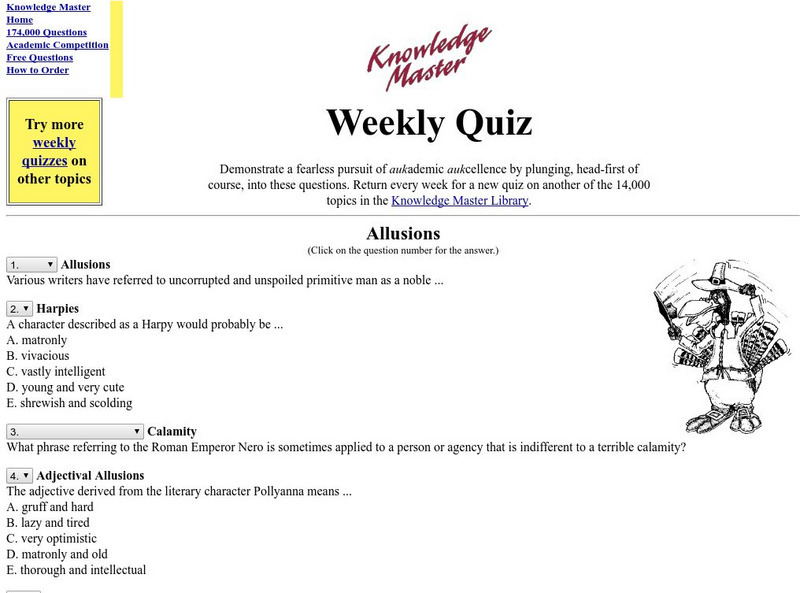


![Holt, Rinehart and Winston: Elements of Literature: Allegory Chart [Pdf] Graphic Holt, Rinehart and Winston: Elements of Literature: Allegory Chart [Pdf] Graphic](http://content.lessonplanet.com/resources/thumbnails/410051/large/bwluav9tywdpy2symdiwmduymc03nju5ltfzewxrzziuanbn.jpg?1589985124)